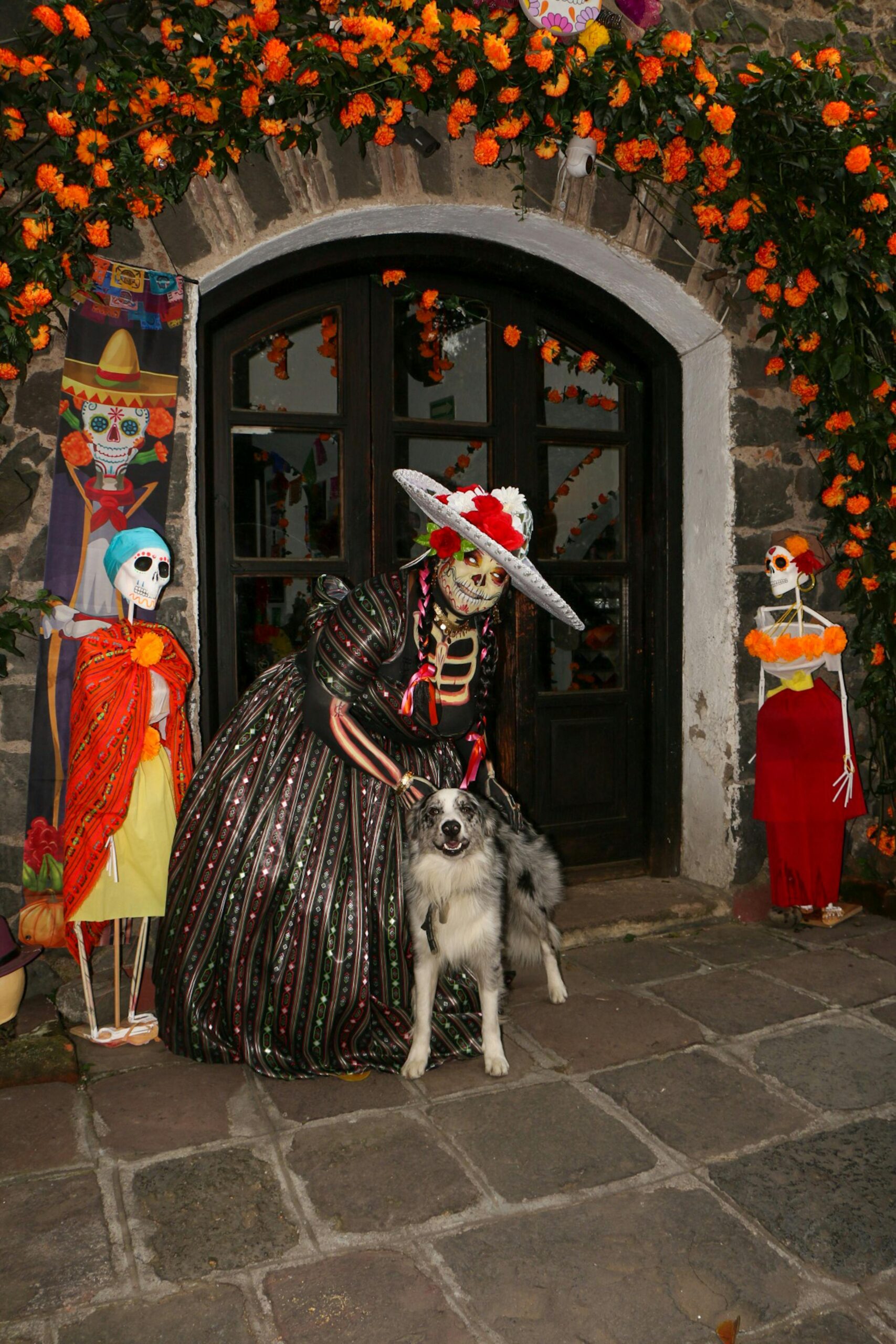From the hidden dangers of Halloween candy to pet costume safety, these experts give advice on how to keep your furry friends safe this spooky holiday
Halloween always brings excitement and fun for humans—from trick-or-treating door to door to decorating with spiderwebs and carved pumpkins, and, of course, the funnest part, dressing up in costume. However, it can also pose unexpected dangers for cats, dogs, and other furry friends.

Dr. Anne Dominique Reyes-Sy, associate veterinarian at Vets in Practice Animal Hospital, explains, “Halloween is incredibly fun for us humans, but it can be overwhelming and even dangerous for our pets… The sudden influx of strangers, unusual noises, new decorations that can potentially be mistaken as toys, and tempting but toxic treats create a perfect storm of potential hazards.”
As Halloween looms, veterinary and pet care experts share essential advice on keeping pets safe during the spookiest season of the year.
Common trick-or-treating hazards
According to Philipp Renner, CEO of the healthy and holistic dog wellness brand Dr. Shiba, one of the most frequent incidents involves pets escaping. “One common incident I hear about is pets slipping out the front door as trick-or-treaters come and go,” he notes. “We always recommend keeping pets in a secure room during peak trick-or-treating hours.”
The bustling activity during Halloween can also be overwhelming for pets. “Creating a quiet, safe space for your pet is crucial. Set up a room with their bed, toys, and some calming music to drown out doorbell sounds if they are prone to be stressed out by such things.”
The hidden dangers of Halloween candy
When it comes to Halloween candy, the risks go beyond chocolate for pets.
“While most people know chocolate is toxic, other common Halloween treats can be just as dangerous,” Dr. Reyes-Sy warns. “Raisins, macadamia nuts, and anything containing xylitol, an artificial sweetener, are all toxic to pets… A general rule of thumb: The darker the chocolate, the more dangerous since it usually contains more concentrated cocoa content… Caffeine in candy is another concern. And while not toxic, high-sugar or high-fat treats can lead to pancreatitis, which is painful and potentially life-threatening.”
She rules out xylitol, a common ingredient found in chewing gum, as especially dangerous, “Even a small amount can cause rapid blood sugar drops in dogs.”
READ: 7 horror games that will have you feeling hopeless
On proper pet treats
While candy for humans should be hidden from pets this Halloween, Dr. Reyes-Sy advises, “to stick to treats specifically formulated for pets to avoid any risks. And while we’re at it, we may need to consider control as too many treats could also lead to improper digestion and pancreatic issues.”
“It’s crucial for pet owners to read labels carefully. Terms like ‘natural’ or ‘premium’ aren’t regulated in pet food, so they don’t necessarily guarantee quality,” Renner says. “Look for treats with simple, recognizable ingredients.”
Specifically, she suggests “treats made with natural ingredients that offer additional health benefits, like supporting digestive health or boosting the immune system. I’ve been impressed with Dr. Shiba’s approach to functional treats. Their Happy Tummy and Pro Immune options, for example, make treat time both fun and beneficial for pets. The key is moderation—treats should only make up a small part of your pet’s diet.”
Considering pet costume safety
While it’s fun to dress up your pet in costumes—like the increasingly popular Chucky doll outfit or princess dresses online—it’s important to be mindful when choosing a costume for your dog.
“Look for costumes that don’t restrict movement, breathing, or vision,” advises Dr. Reyes-Sy. “Avoid small parts that could be chewed off and swallowed. For those pet owners with short-snouted breeds, [like pugs] be extra vigilant since they are more prone to breathing problems and heat stroke.”
Be mindful of signs of costume distress, and monitor your pet’s comfort level, too. “Watch for signs of stress like excessive panting, trying to remove the costume, or hiding. If your pet seems uncomfortable, it’s best to remove the costume immediately. Not all pets enjoy dressing up, and that’s okay!” Dr. Reyes-Sy says.
**
If you suspect your pet has consumed something harmful, immediate action is crucial. “Don’t wait for symptoms to appear. Contact your vet immediately,” urges the doctor. “Signs to watch for include vomiting, diarrhea, lethargy, or unusual behavior. Trust your instincts. You know your pet best.”
When asked for the most crucial piece of advice, Renner emphasizes prevention. “If I could give just one piece of advice, it would be to keep all Halloween candy and decorations out of your pet’s reach. It’s simple but effective. Many emergencies can be prevented just by being vigilant about what your pet has access to.”
A little preparation can prevent many common Halloween pet emergencies, and by being mindful of these recommendations, pet owners can be sure that their furry friends stay safe while the rest of the family enjoys the Halloween fun.